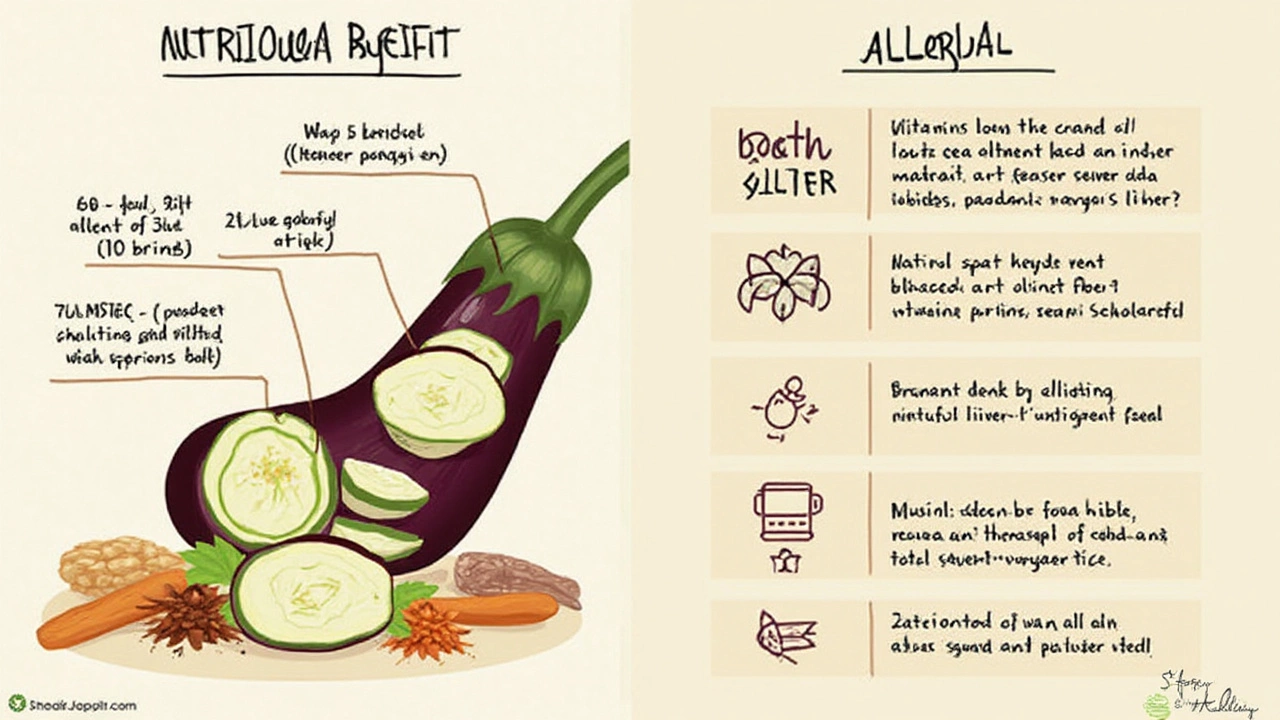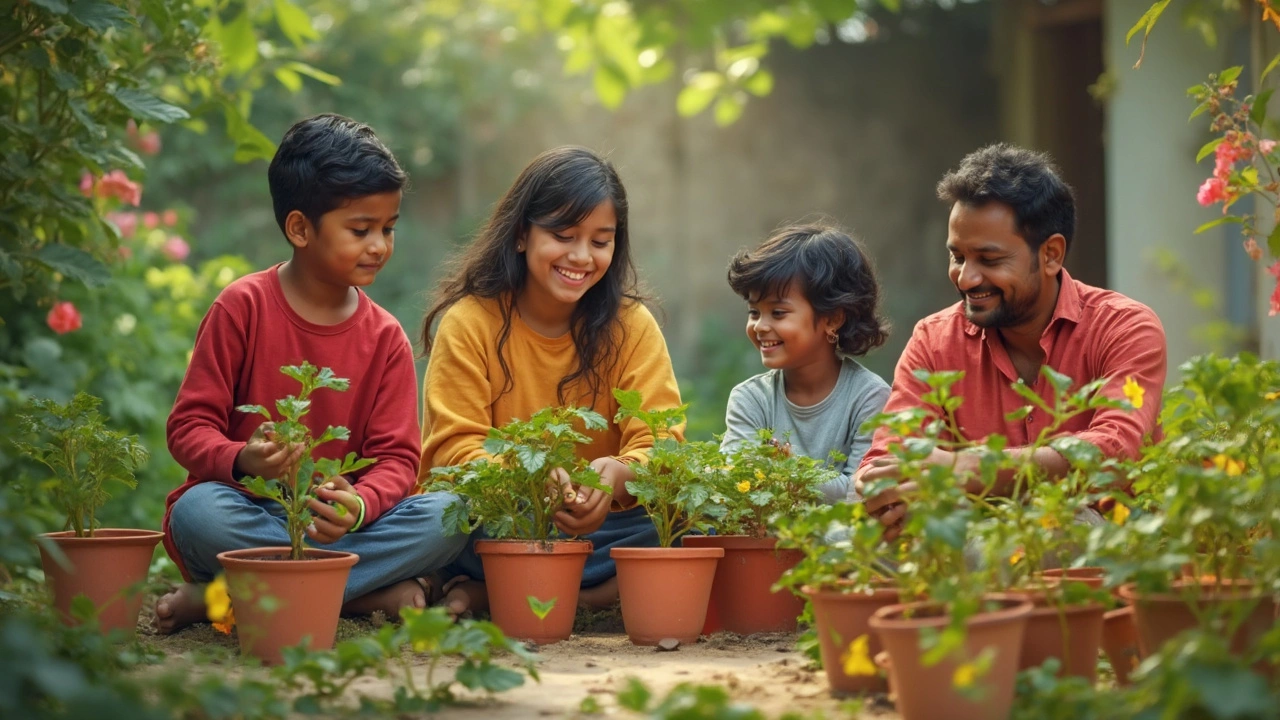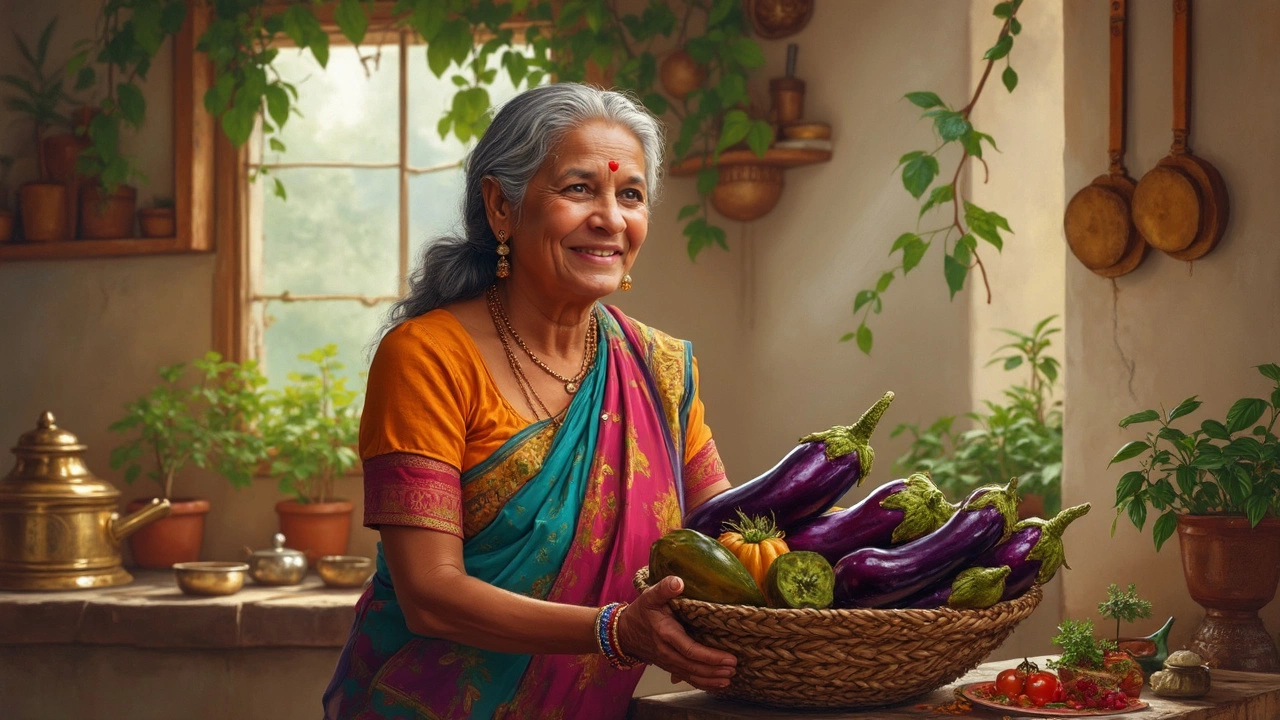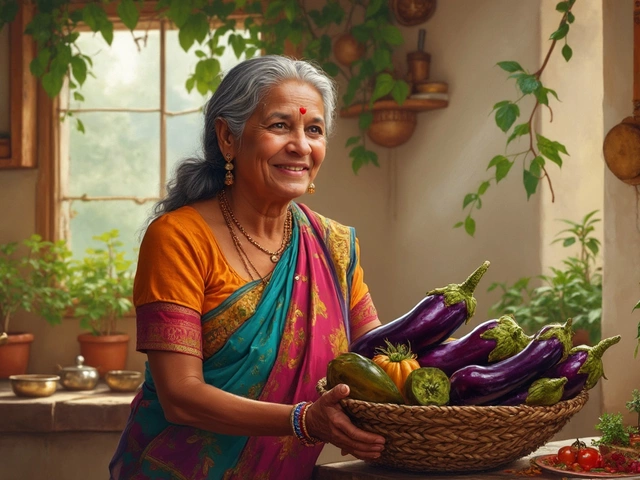Brinjal—call it baingan, eggplant, or aubergine—is one of those veggies you either love or skip at the market. It's seen everywhere from simple sabzis to smoky baingan bharta. But aside from being cheap and easy to cook, ever wonder if it’s actually doing you any good?
First thing you should know: brinjal is mostly water. Yep, nearly 90%. This makes it pretty light on calories, so you can pile it on your plate without worrying much about weight. Plus, it’s one of the simplest vegetables to grow at home—just a bit of sun, a big pot, and you’re set.
- Brinjal Basics: India’s Versatile Veggie
- Nutrition Breakdown: What’s Inside Brinjal?
- Health Benefits and Common Concerns
- Tips for Growing and Using Brinjal
- Brinjal Myths Busted
Brinjal Basics: India’s Versatile Veggie
No other veggie seems to stir up debates at the dinner table like brinjal. It’s called by different names across India—baingan in Hindi, kathirikai in Tamil, vankaya in Telugu, and “eggplant” if you’re speaking English. But wherever you go, you’ll see it in curries, stuffed, roasted, or even deep-fried into crispy chips.
India is actually the world’s second largest producer of brinjal, right after China. That’s a lot of eggplants! You’ll notice brinjal isn’t just the big, purple kind. There are slim green ones, small round white ones, and even striped varieties. Farmers pick types suited to local tastes and climate. It’s one of the few veggies that happily grows across almost every state, from tiny terrace pots in Delhi to sprawling plots in West Bengal.
If you’re thinking about growing something easy at home, brinjal is honestly a safe bet. It loves warm weather, handles a bit of neglect, and rewards you with fruit nearly all year. Pest issues do pop up, but regular watering and keeping the plant in the sun usually takes care of most problems.
Brinjal has played a role in Indian kitchens for hundreds of years—probably popping up in your grandma’s old recipes. It’s truly the brinjal of all trades, showing up in everything from North Indian curries to South Indian sambar. Flexibility is its superpower; you can grill, roast, stew, or even mash it.
Nutrition Breakdown: What’s Inside Brinjal?
Let’s get real about what you’re actually eating when you put brinjal on your plate. This veggie is kind of a nutrition ninja—low in calories, high in water, and a sneaky way to add fiber to your meals without even trying.
Here’s a closer look at what you get in 100 grams of brinjal:
| Nutrient | Amount (per 100g) |
|---|---|
| Calories | 25 kcal |
| Water | ~89 g |
| Protein | 1 g |
| Fat | 0.2 g |
| Fibre | 3 g |
| Carbohydrate | 6 g |
| Potassium | 230 mg |
| Vitamin C | 2 mg |
| Folate | 22 mcg |
| Magnesium | 14 mg |
| Antioxidants (nasunin) | High (found in purple skin) |
One big thing people miss: most of brinjal’s healthy bits—like antioxidants—are hiding in the purple skin. Those antioxidants, especially something called nasunin, help protect your cells from damage. Skipping the skin? You miss a chunk of the goodness.
Brinjal is super low in fat and makes for a great pick if you want to fill up without filling out. The fiber also keeps your digestion rolling smoothly, and the potassium gives your heart and muscles some love. The iron and folate in brinjal sneak in a bit of support for blood health, which is extra helpful if you don’t eat a lot of meat.
If you’re gardening, the boost doesn’t stop at the table. Brinjal pulls nutrients from the soil, and fresher homegrown versions might have even more vitamins and better taste than store stuff.
- Keep the purple skin on—that’s where antioxidants hide.
- Don’t overcook; long cooking can zap out vitamin C.
- If you want more iron absorption, team up your brinjal recipes with lemon juice or tomatoes.
So, stacking up your thali with brinjal isn’t just tradition—it’s got some science backing it too.

Health Benefits and Common Concerns
People often wonder if brinjal is just a filler veggie, but it’s got some solid health perks. Here’s what’s actually inside that humble baingan:
| Nutrition (per 100g) | Value |
|---|---|
| Calories | 25 kcal |
| Water | ~89g |
| Fiber | 3g |
| Potassium | 230mg |
| Vitamin C | 2mg |
| Antioxidants | Nasunin, chlorogenic acid |
So, what does all this mean for you?
- Brinjal is low in calories, which makes it friendly for weight-watching. Most of what you’re eating is water and fiber.
- That fiber? It keeps your digestion smooth and helps you feel full longer. You’re less likely to reach for snacks after a brinjal-heavy meal.
- Brinjal contains antioxidants—especially in its deep purple skin. Nasunin and chlorogenic acid are not just cool chemical names. They help fight off damage from free radicals, which are linked with aging and disease.
- The potassium in brinjal is good for blood pressure. If your family has a history of hypertension, sneaking in more brinjal could help (as part of a balanced diet, of course).
But it’s not all smooth sailing. Here are a few things folks should actually look out for:
- If you have kidney stones or kidney issues, don’t overdo it. Brinjal contains oxalates, which can make things worse if your doctor has already flagged this as a risk.
- Some people complain about “bitter” brinjals, which can be due to the natural compound solanine. Eating a ton of brinjal (unlikely for most) could upset your tummy or make you feel weird. Common cooking methods in India, like roasting and frying, usually get rid of most of the solanine, so you’re safe.
- Allergies are rare, but not impossible. If you notice mouth itching or tummy troubles after eating brinjal, pay attention. Try eating a small piece first if you’ve never had it before.
One funny thing—old-school folks in some parts of India still think brinjal is “heaty” and should be avoided during pregnancy. No real study backs this up. There’s no proof brinjal causes problems if you’re pregnant, unless you’re already sensitive or allergic.
Tips for Growing and Using Brinjal
Want to grow your own brinjal at home? You’re not alone—this brinjal is one of India’s favorite kitchen crops. It fits well in rooftop gardens, balconies, or backyard patches. Here’s how you can make the most out of it, even if you’re just getting started.
- Pick the Right Seeds: India has loads of brinjal types—round, long, small, or striped. For quick results, go for hybrid varieties that resist pests. Local nurseries usually suggest the best ones for your area.
- Soil Matters: Brinjal likes loose soil with good drainage. Mix your soil with compost before planting. This gives your plants a nutrient boost and helps them grow strong.
- Sunlight is Key: Brinjal needs at least 6 hours of direct sunlight daily. Place pots where the plant will not be shaded much during the day.
- Watering: Don’t let the soil get too dry, but don’t drown the roots either. Water deeply two or three times a week, depending on how hot it is.
- Pest Patrol: Watch out for fruit borers or aphids. Handpick worms or use neem oil spray to keep things under control—no need to go straight for chemicals.
Once you harvest those shiny purple baingans, here are a few ways to use them in your kitchen:
- Bharta: Roast directly on the flame, peel, mash, and toss with onions, tomatoes, and masala.
- Stuffed Brinjal: Small round types work great—stuff them with peanut, coconut, or masala fillings.
- Fried Slices: Dip thin slices in besan and spices, fry until crisp, and serve as snacks.
Wondering how brinjal stacks up in terms of nutrition? Here’s a quick look at what 100 grams of raw brinjal gives you:
| Nutrient | Amount (per 100g) |
|---|---|
| Calories | 25 |
| Protein | 1 g |
| Fiber | 3 g |
| Vitamin C | 3 mg |
| Potassium | 230 mg |
Growing brinjal at home means you skip all those nasty pesticides and pick veggies at their tastiest. Just keep checking for pests, water regularly, and jump in with your favorite recipes when the plant starts bearing fruit.

Brinjal Myths Busted
There’s a ton of confusion about brinjal. Some folks say it’s unhealthy, others swear it’s an “allergy vegetable,” and you’ve probably heard older family members warning pregnant women to avoid it. So what’s true and what’s just someone’s opinion passed down as fact? Let’s clear up the most common myths.
- Myth 1: Brinjal causes allergies for everyone. Sure, some people might be allergic, but that’s rare. The thing is, brinjal belongs to the nightshade family, like tomatoes and potatoes. If you’re sensitive to those, then yes, watch out. But for most people, eating brinjal is totally safe.
- Myth 2: Brinjal is bad during pregnancy. No solid research says brinjal causes problems in pregnancy. The old worry comes from the idea that brinjal, in huge amounts, can act as a mild laxative. You’d need to eat a lot for that effect, so regular amounts in sambar or bharta are fine if your doctor says so.
- Myth 3: Brinjal is only water and has no nutrition. Take a look at this:
| Nutrient (per 100g) | Amount |
|---|---|
| Vitamin C | 2.2 mg |
| Fiber | 2.5 g |
| Potassium | 230 mg |
| Calories | 25 kcal |
It's not packed with everything, but fiber and potassium are useful for most diets, especially if you’re looking to keep your gut and heart healthy.
- Myth 4: Brinjal is always bitter and spongy. Bitterness usually comes from older or bruised brinjals. Choose ones with shiny, smooth skin and avoid anything wrinkled or too soft. Salting slices before cooking also helps take the edge off any bitterness.
- Myth 5: Brinjal should never be eaten raw. Raw brinjal does contain a compound called solanine that tastes bitter and can cause stomach upset in high amounts, but you’d have to eat a ton to actually get sick. Cooked brinjal is much safer and more digestible—so stick to your bharta, sambar, or fries and you’re good.
Bottom line: most rumors around brinjal are just that—rumors. As long as you cook it right and don’t have a real allergy, brinjal can be a healthy part of your meals.




